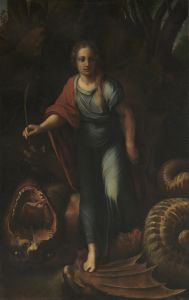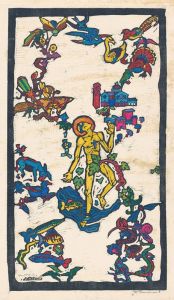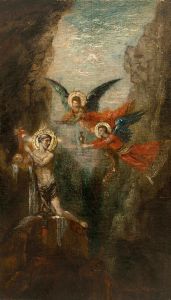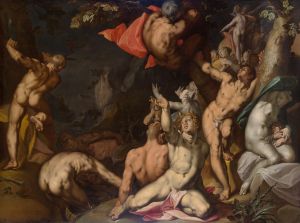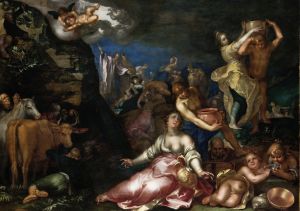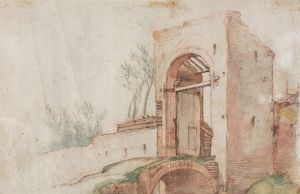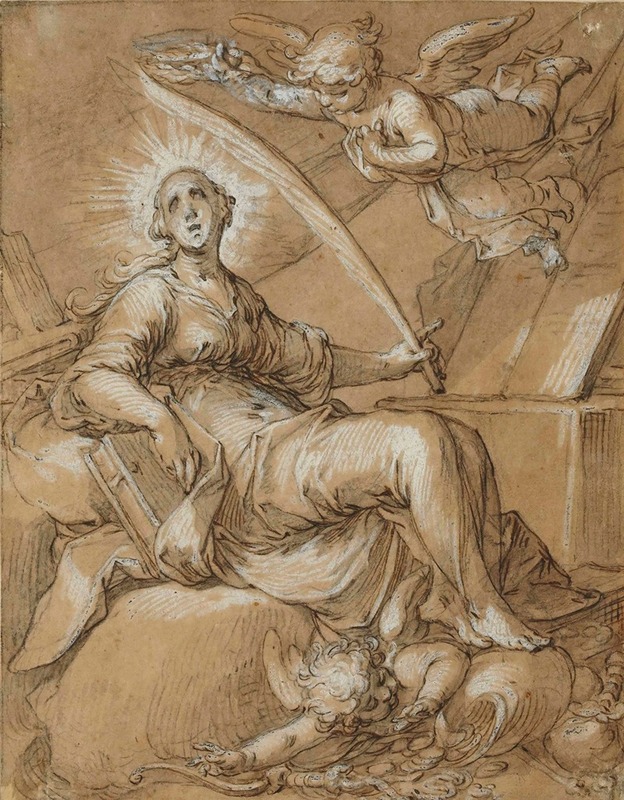
Sainte Catherine
A hand-painted replica of Abraham Bloemaert’s masterpiece Sainte Catherine, meticulously crafted by professional artists to capture the true essence of the original. Each piece is created with museum-quality canvas and rare mineral pigments, carefully painted by experienced artists with delicate brushstrokes and rich, layered colors to perfectly recreate the texture of the original artwork. Unlike machine-printed reproductions, this hand-painted version brings the painting to life, infused with the artist’s emotions and skill in every stroke. Whether for personal collection or home decoration, it instantly elevates the artistic atmosphere of any space.
Abraham Bloemaert, a prominent Dutch painter and printmaker, is known for his contributions to the late Mannerist and early Baroque periods. One of his notable works is "Sainte Catherine," a painting that exemplifies his skill in religious and historical subjects. Bloemaert was born in 1566 in Gorinchem, the Netherlands, and he became a central figure in the Utrecht School, which was influential in the development of Dutch art during the 16th and 17th centuries.
"Sainte Catherine" depicts Saint Catherine of Alexandria, a Christian martyr who was highly venerated in the Middle Ages. According to tradition, Catherine was a learned woman of noble birth who converted to Christianity and, after a debate with pagan philosophers, was condemned to death by the Roman Emperor Maxentius. She was to be executed on a spiked wheel, which miraculously broke, leading to her eventual beheading. Her story became a popular subject in Christian art, symbolizing wisdom, faith, and martyrdom.
Bloemaert's portrayal of Saint Catherine is characteristic of his style, which often combined elements of Mannerism with emerging Baroque influences. His work is known for its dynamic compositions, rich color palette, and detailed rendering of figures. In "Sainte Catherine," Bloemaert likely employed these techniques to convey the saint's piety and strength. The painting would typically feature Catherine with her traditional attributes, such as the spiked wheel and a martyr's palm, emphasizing her role as a Christian martyr.
Bloemaert's training and career were marked by his exposure to various artistic influences. He studied under several masters, including his father, Cornelis Bloemaert, and later under prominent artists in Paris. His time in France exposed him to the works of the Fontainebleau School, which left a lasting impact on his style. Upon returning to the Netherlands, Bloemaert became a pivotal figure in the Utrecht School, where he taught many students who would go on to become significant artists in their own right, such as Gerard van Honthorst and Hendrick ter Brugghen.
Throughout his career, Bloemaert's work evolved, reflecting the broader transitions in European art from the intricate and elongated forms of Mannerism to the more naturalistic and dramatic expressions of the Baroque. His religious paintings, including "Sainte Catherine," often demonstrate a blend of these styles, showcasing his ability to adapt and innovate.
While specific details about the creation and current location of "Sainte Catherine" may not be extensively documented, Bloemaert's oeuvre is well-regarded for its contribution to Dutch art. His works are held in various collections worldwide, and he remains a respected figure for his role in bridging different artistic movements and for his influence on subsequent generations of artists.
In summary, "Sainte Catherine" by Abraham Bloemaert is a testament to the artist's mastery of religious themes and his ability to convey complex narratives through his distinctive style. Bloemaert's legacy endures through his paintings and the impact he had on the development of Dutch art during a transformative period in European history.





